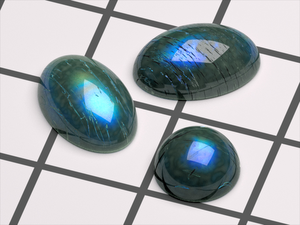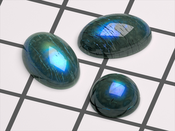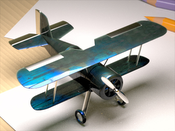Information
- Publication Type: Conference Paper
- Workgroup(s)/Project(s):
- Date: May 2009
- ISBN: 978-1-56881-470-4
- Publisher: ACM
- Location: Kelowna, British Columbia, Canada
- Lecturer: Andrea Weidlich
- Booktitle: Proceedings of Graphics Interface 2009
- Conference date: 25. May 2009 – 27. May 2009
- Pages: 79 – 85
- Keywords: Predictive Rendering, Surface, Crystals
Abstract
Labradorescence is a complex optical phenomenon that can be found in certain minerals, such as Labradorite or Spectrolite. Because of their unique colour properties these minerals are often used as gemstones and decorative objects. Since the phenomenon is strongly orientation dependent, such minerals need a special cut to make the most of their unique type of colourful sheen, which makes it desirable to be able to predict the final appearance of a given stone prior to the cutting process. Also, the peculiar properties of the effect make a believable replication with an ad-hoc shader dificult even for normal, non-predictive rendering purposes. We provide a reflectance model for labradorescence that is directly derived from the physical characteristics of such materials. Due to its inherent accuracy, it can be used for predictive rendering purposes, but also for generic rendering applications.Additional Files and Images
Weblinks
No further information available.BibTeX
@inproceedings{weidlich_2009_REL,
title = "Rendering the Effect of Labradorescence",
author = "Andrea Weidlich and Alexander Wilkie",
year = "2009",
abstract = "Labradorescence is a complex optical phenomenon that can be
found in certain minerals, such as Labradorite or
Spectrolite. Because of their unique colour properties these
minerals are often used as gemstones and decorative
objects. Since the phenomenon is strongly orientation
dependent, such minerals need a special cut to make the most
of their unique type of colourful sheen, which makes it
desirable to be able to predict the final appearance of a
given stone prior to the cutting process. Also, the peculiar
properties of the effect make a believable replication with
an ad-hoc shader dificult even for normal, non-predictive
rendering purposes. We provide a reflectance model for
labradorescence that is directly derived from the physical
characteristics of such materials. Due to its inherent
accuracy, it can be used for predictive rendering purposes,
but also for generic rendering applications. ",
month = may,
isbn = "978-1-56881-470-4",
publisher = "ACM",
location = "Kelowna, British Columbia, Canada ",
booktitle = "Proceedings of Graphics Interface 2009",
pages = "79--85",
keywords = "Predictive Rendering, Surface, Crystals",
URL = "https://www.cg.tuwien.ac.at/research/publications/2009/weidlich_2009_REL/",
}




